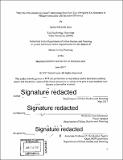| dc.contributor.advisor | Amy Glasmeier. | en_US |
| dc.contributor.author | Goor, Rachel Michelle | en_US |
| dc.contributor.other | Massachusetts Institute of Technology. Department of Urban Studies and Planning. | en_US |
| dc.coverage.spatial | n-us-ny | en_US |
| dc.date.accessioned | 2017-09-15T15:31:43Z | |
| dc.date.available | 2017-09-15T15:31:43Z | |
| dc.date.copyright | 2017 | en_US |
| dc.date.issued | 2017 | en_US |
| dc.identifier.uri | http://hdl.handle.net/1721.1/111382 | |
| dc.description | Thesis: M.C.P., Massachusetts Institute of Technology, Department of Urban Studies and Planning, 2017. | en_US |
| dc.description | Cataloged from PDF version of thesis. | en_US |
| dc.description | Includes bibliographical references (pages 71-74). | en_US |
| dc.description.abstract | Across the U.S., property tax rates for rental buildings average 1.4 times higher than rates for homeownership properties. In New York City, the spread is 6.4 times. In a city where more than 50% of residents are rent-burdened, the Rent Guidelines Board estimates that fully 1/3 of rents are actually just passed-through property taxes. With both the Mayor and the Governor prioritizing housing affordability, reforming the property tax structure to better serve the City's millions of struggling renters should be a priority. This research examines how the existing property tax structure came to rule New York City, and explores its spatial outcomes across the five boroughs. Using data scraped from the 2015 property tax bills of every parcel in the City, this investigation finds that the Department of Finance deviates significantly from its publicized process when calculating tax bills, and moreover, that property taxes are poorly correlated with land, market, and assessed values. This study also investigates options for reform, and finds that while there is no 'silver bullet', there are a number of steps the City could take to mitigate some of the system's inequities and inefficiencies. These include instituting a single tax rate system applied to assessed values; a two tax class system based on full market values; and/or an increased tax on high-priced units. Lastly, this examination finds that any move towards a more functional system will require broad-based support from grassroots to grasstops. The final chapter outlines a rough framework for building such a movement. | en_US |
| dc.description.statementofresponsibility | by Rachel Michelle Goor. | en_US |
| dc.format.extent | 74 pages | en_US |
| dc.language.iso | eng | en_US |
| dc.publisher | Massachusetts Institute of Technology | en_US |
| dc.rights | MIT theses are protected by copyright. They may be viewed, downloaded, or printed from this source but further reproduction or distribution in any format is prohibited without written permission. | en_US |
| dc.rights.uri | http://dspace.mit.edu/handle/1721.1/7582 | en_US |
| dc.subject | Urban Studies and Planning. | en_US |
| dc.title | "Only the little people pay taxes" : reforming New York City's property tax structure to mitigate inequality and increase efficiency | en_US |
| dc.title.alternative | Reforming New York City's property tax structure to mitigate inequality and increase efficiency | en_US |
| dc.type | Thesis | en_US |
| dc.description.degree | M.C.P. | en_US |
| dc.contributor.department | Massachusetts Institute of Technology. Department of Urban Studies and Planning | |
| dc.identifier.oclc | 1003291646 | en_US |
